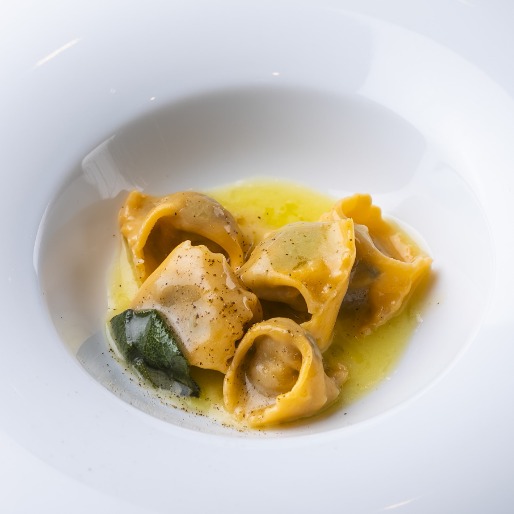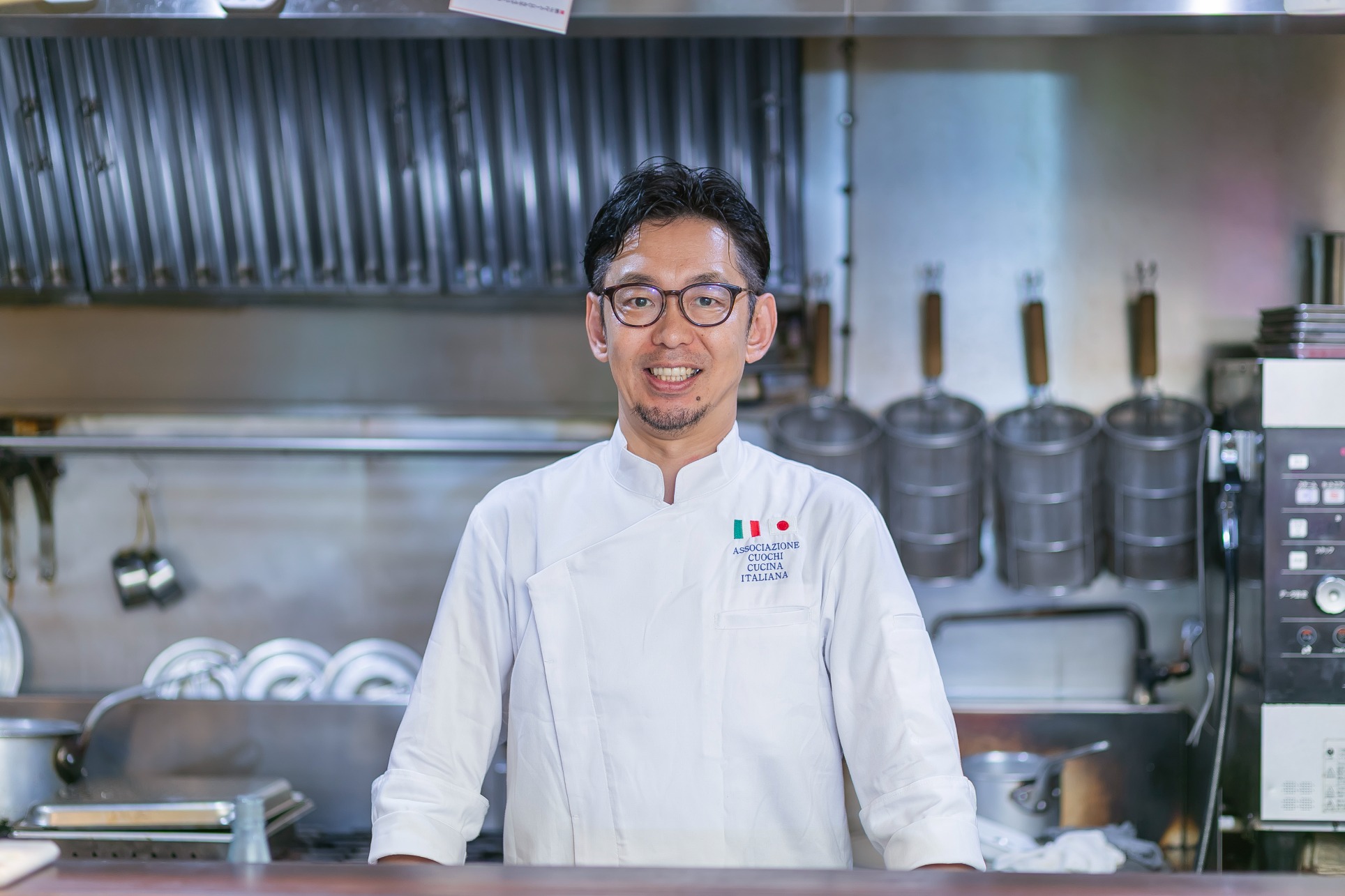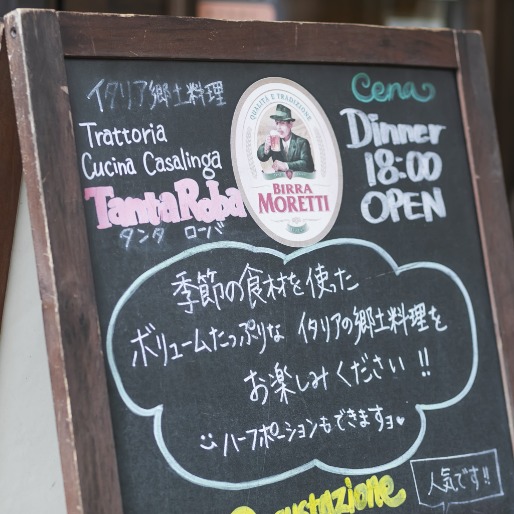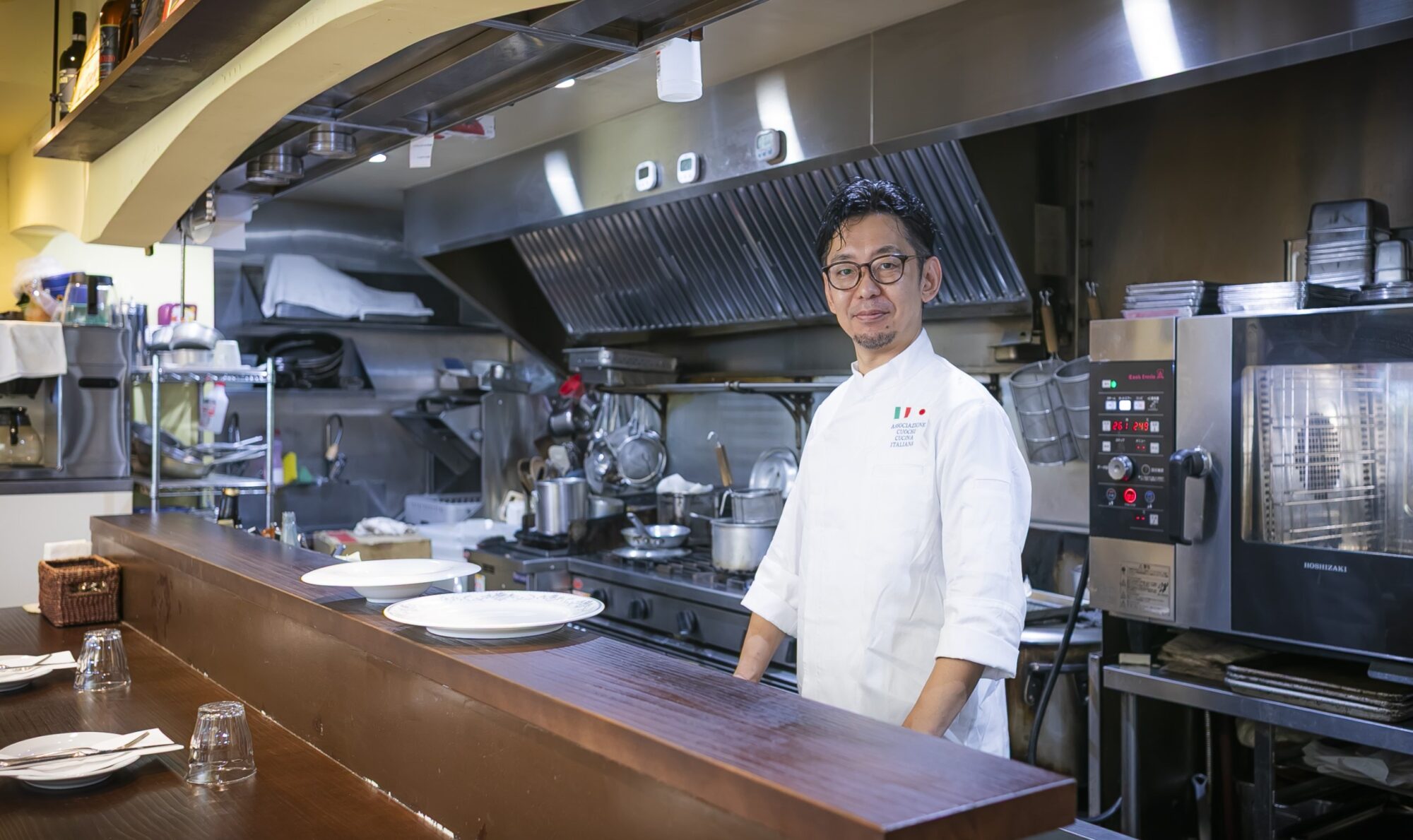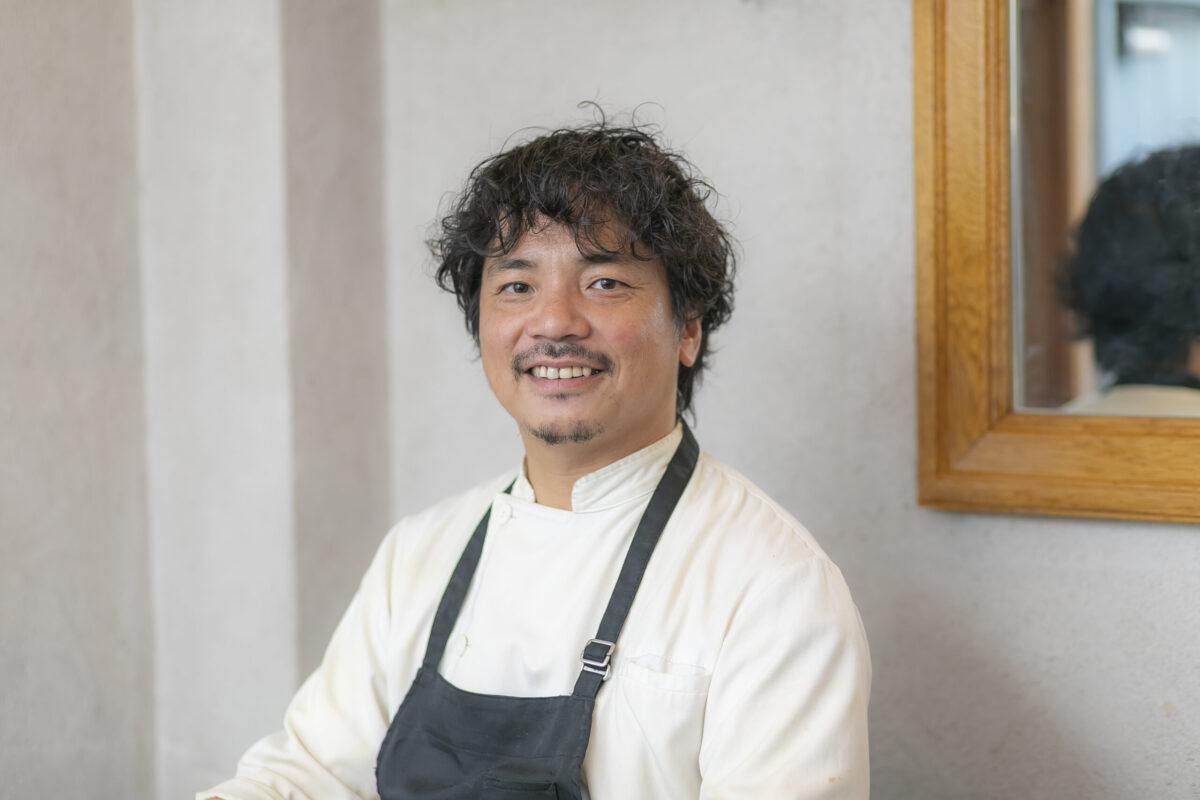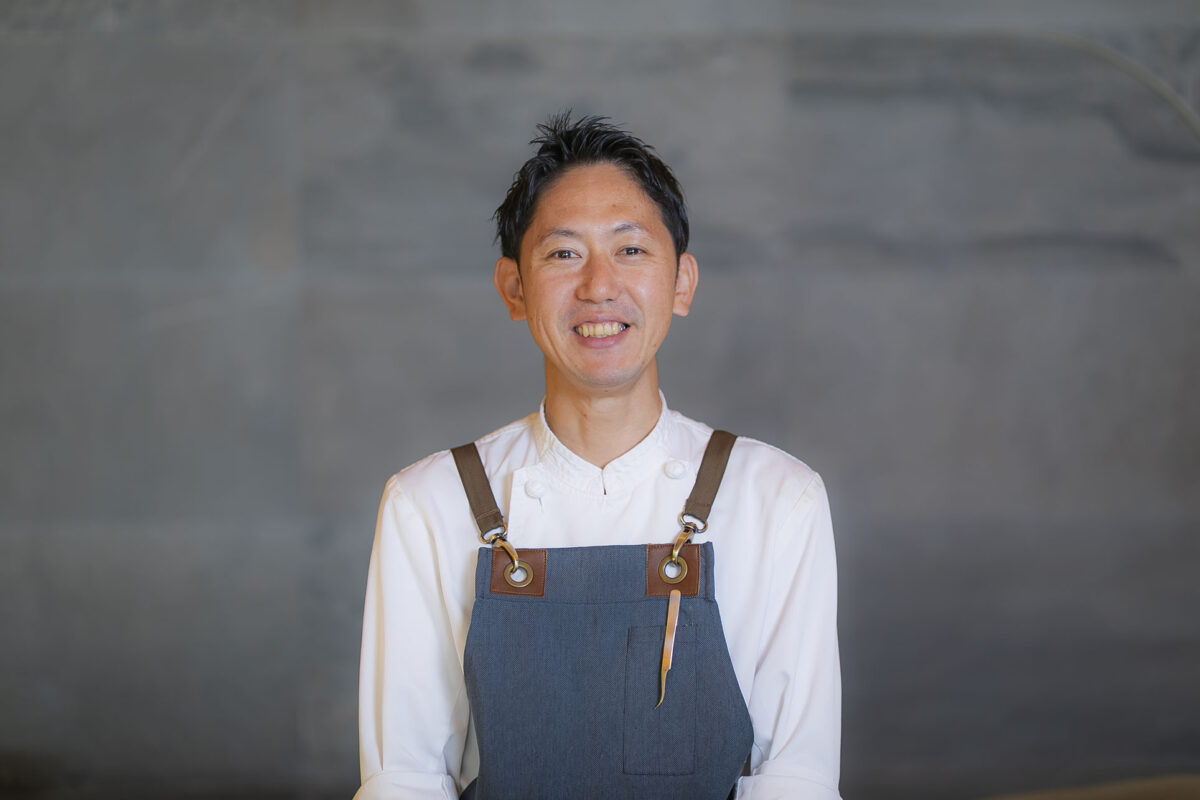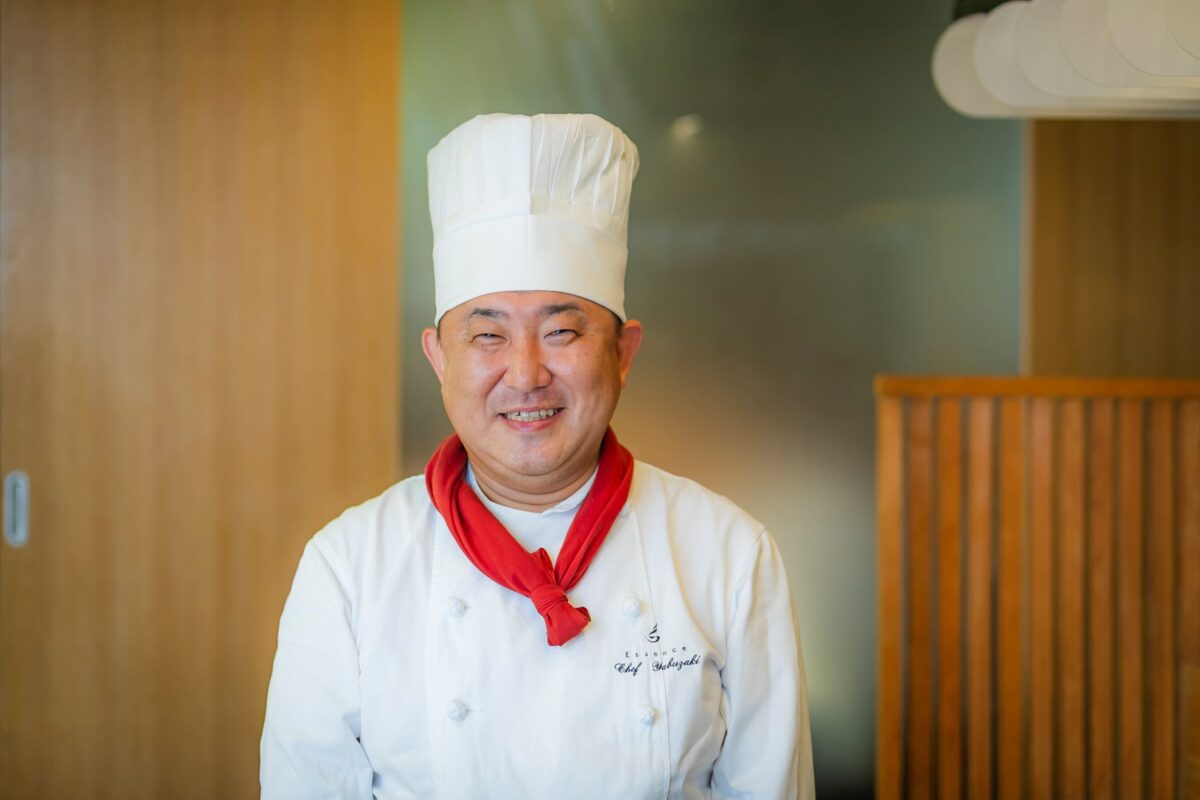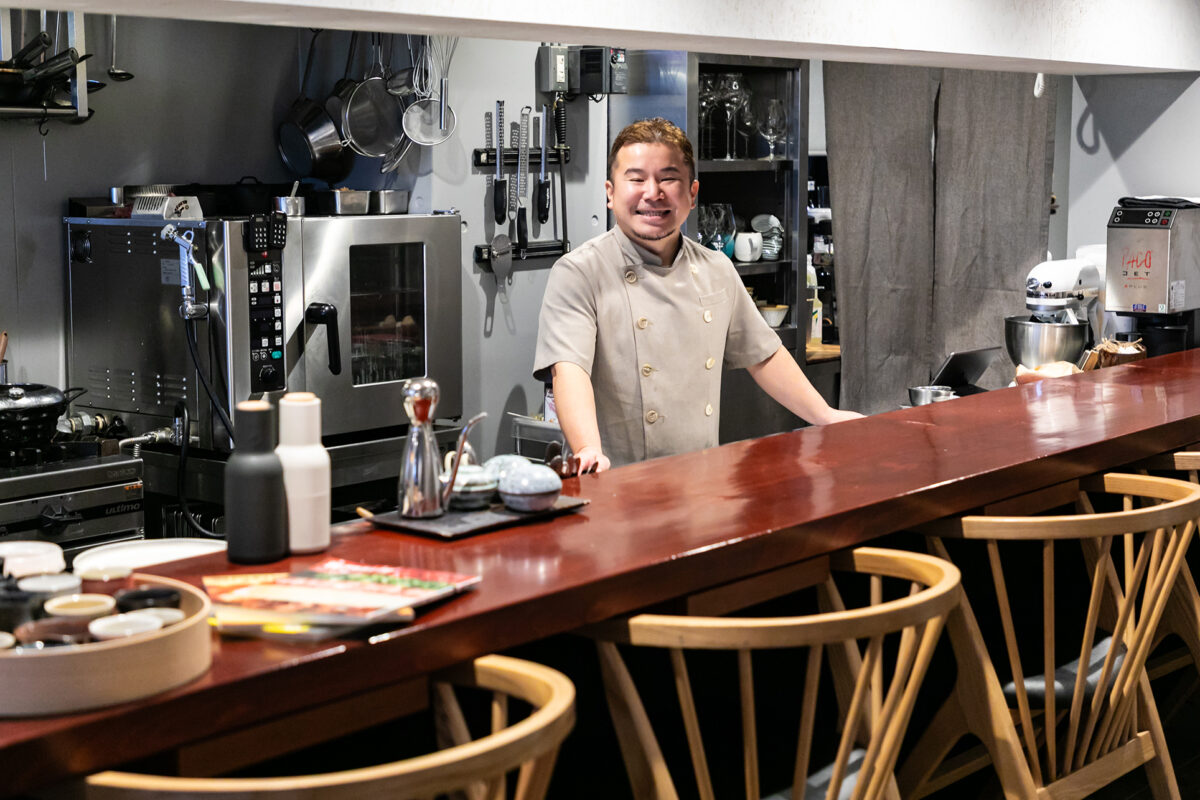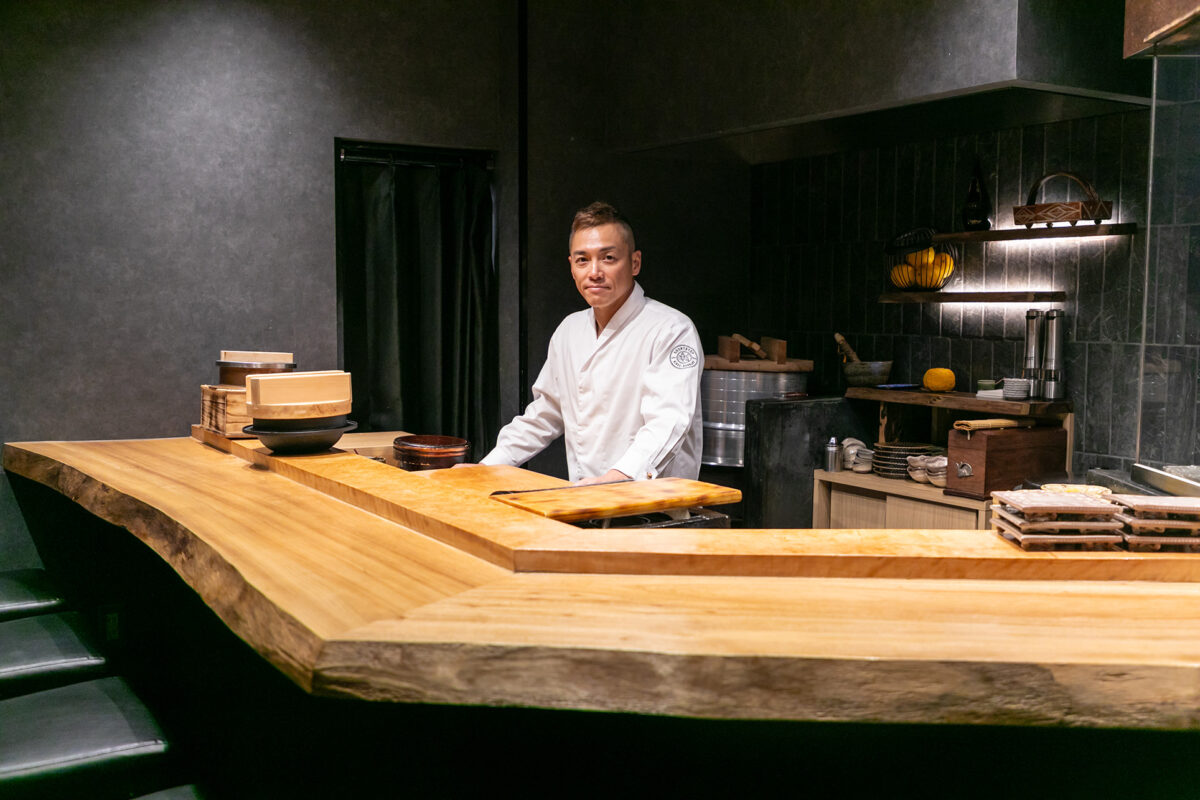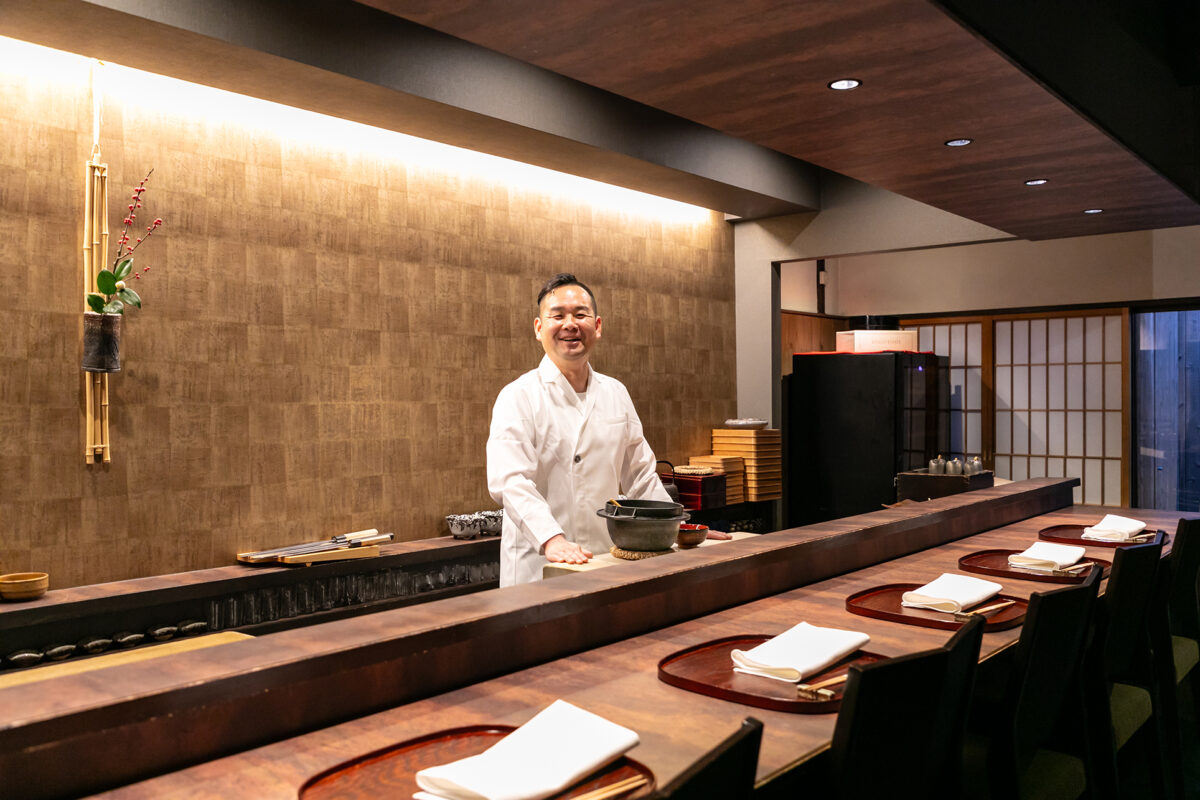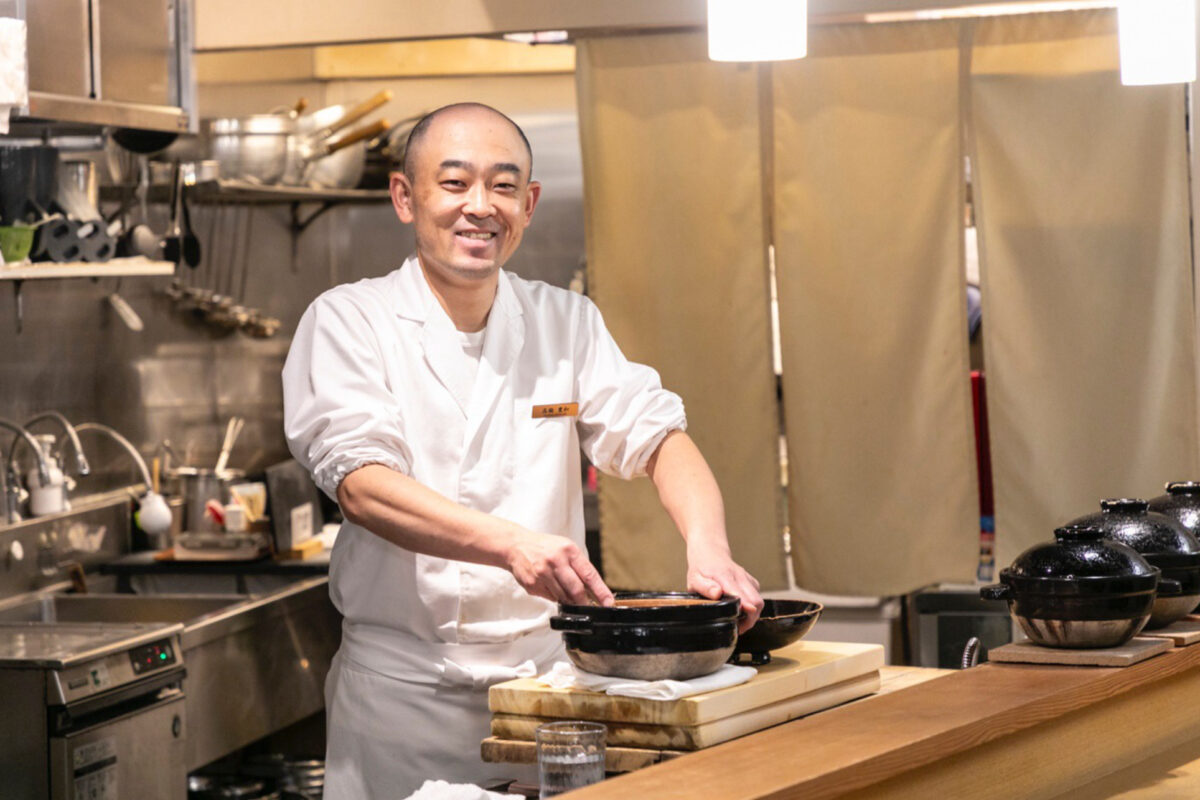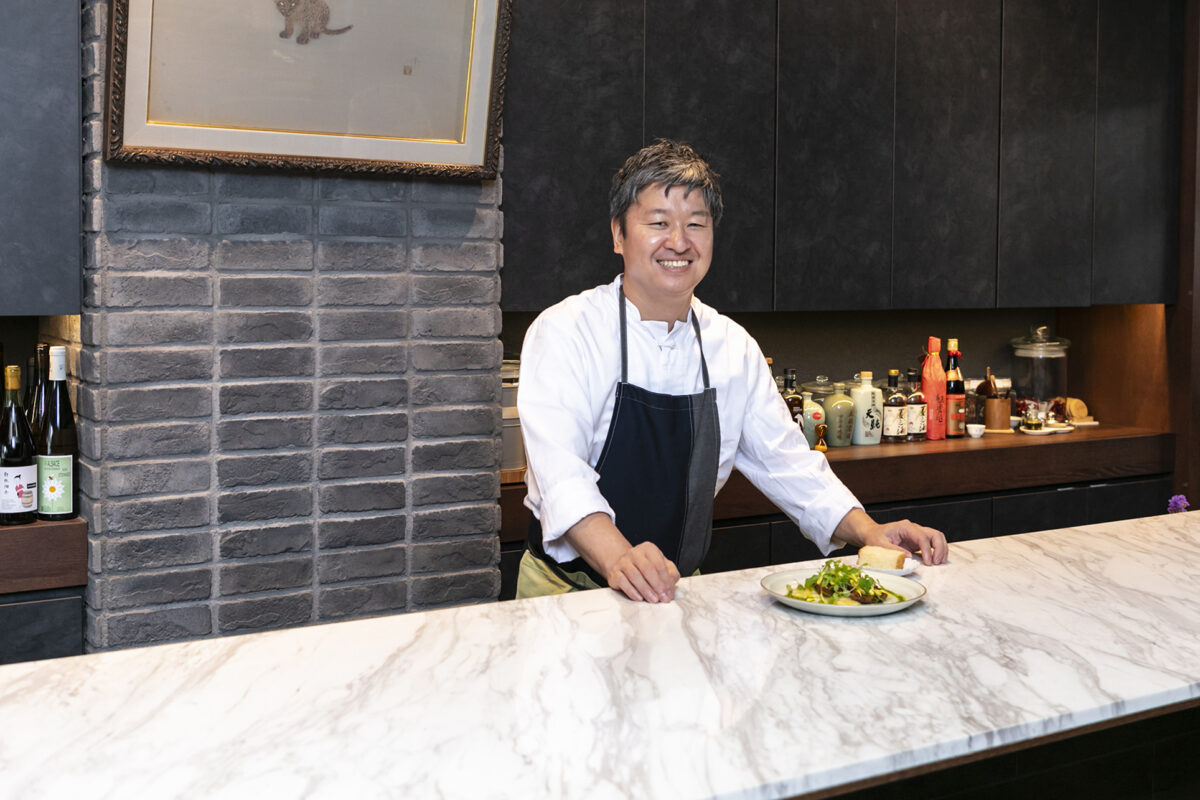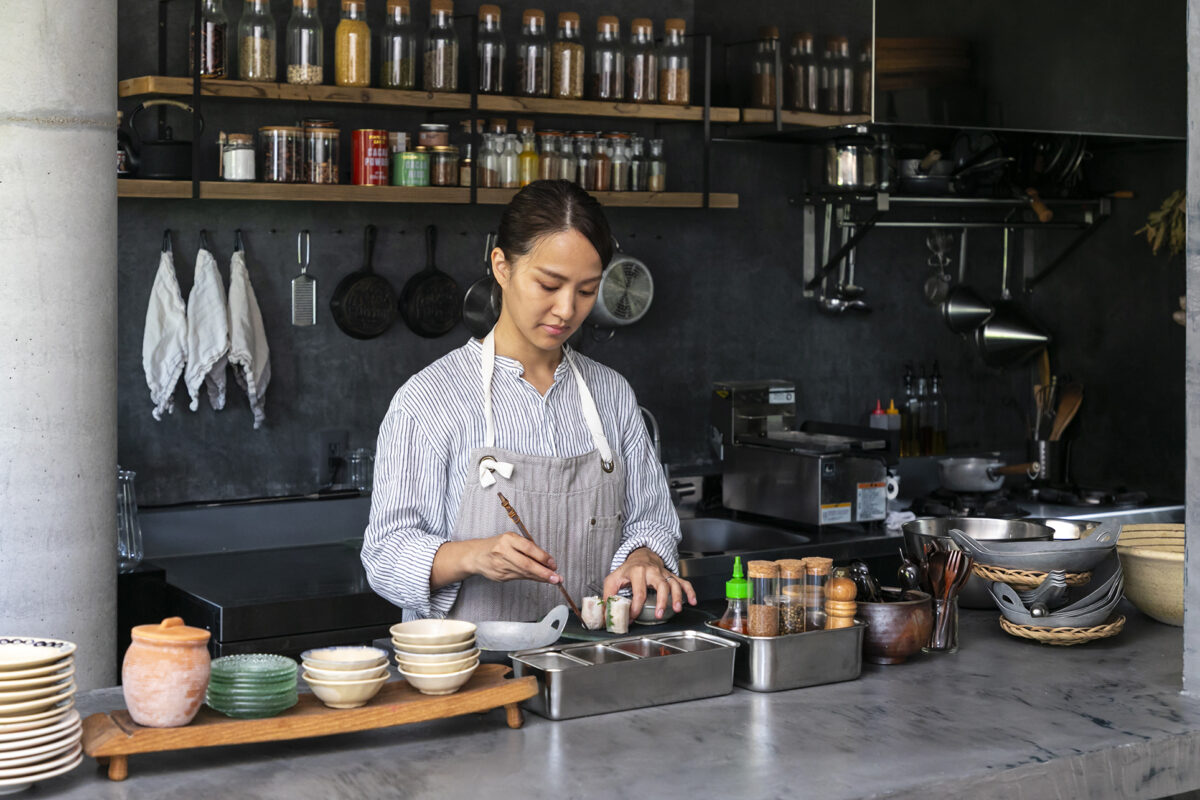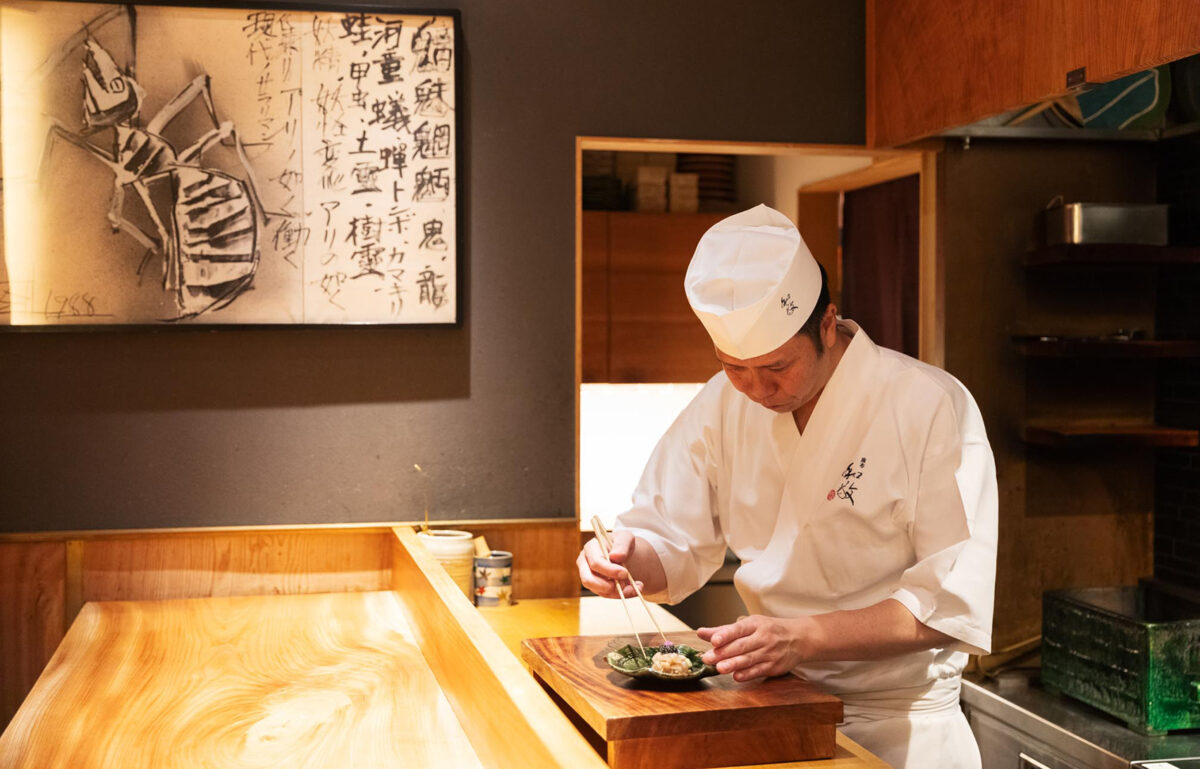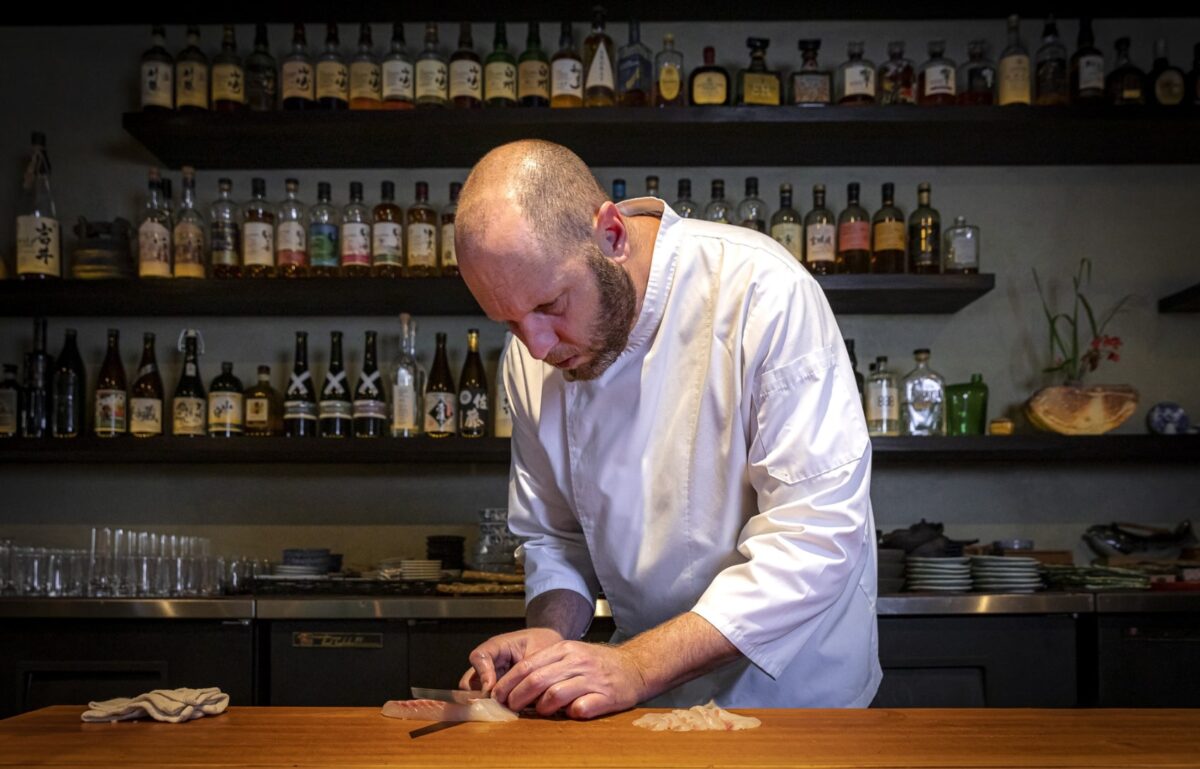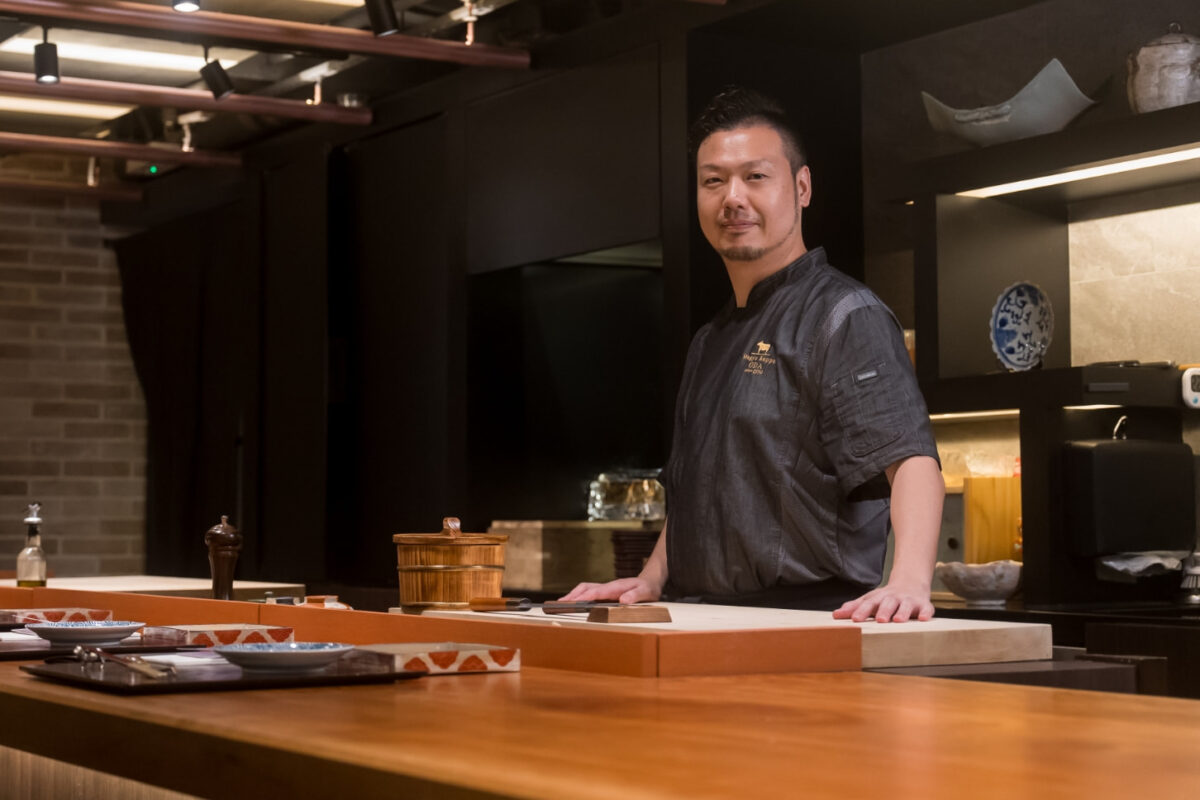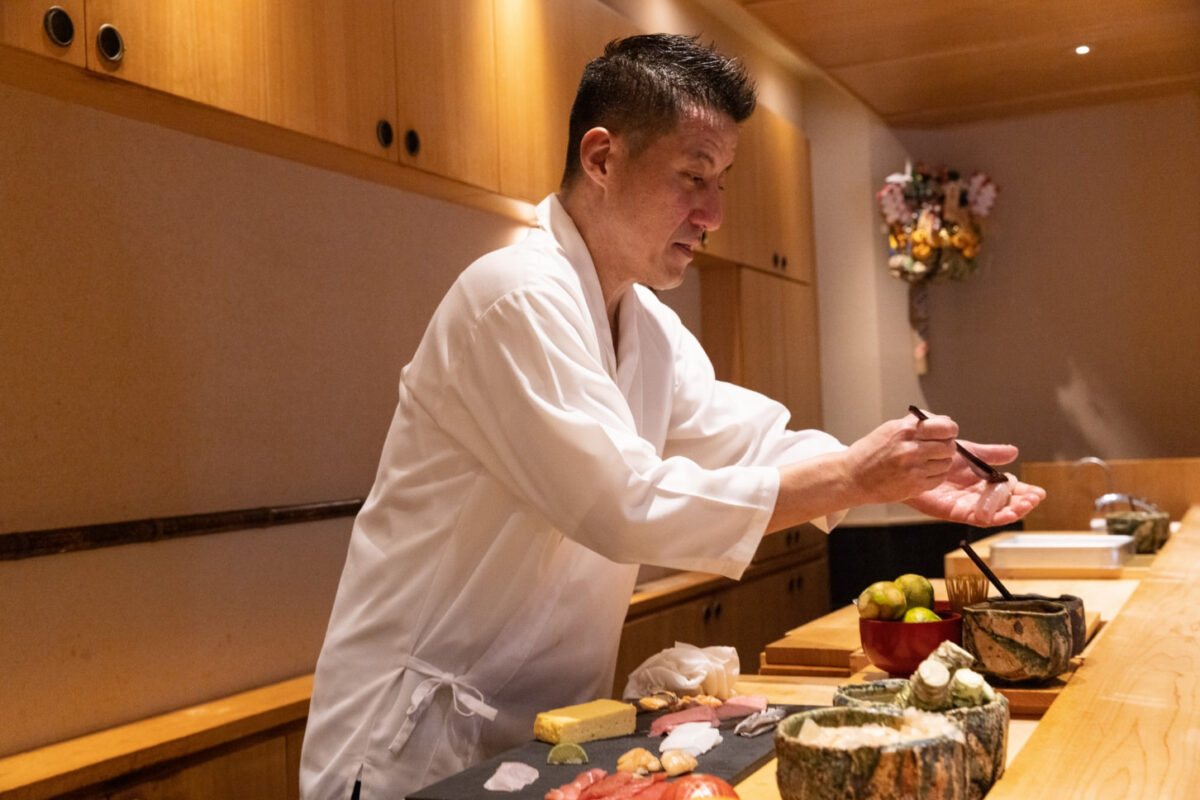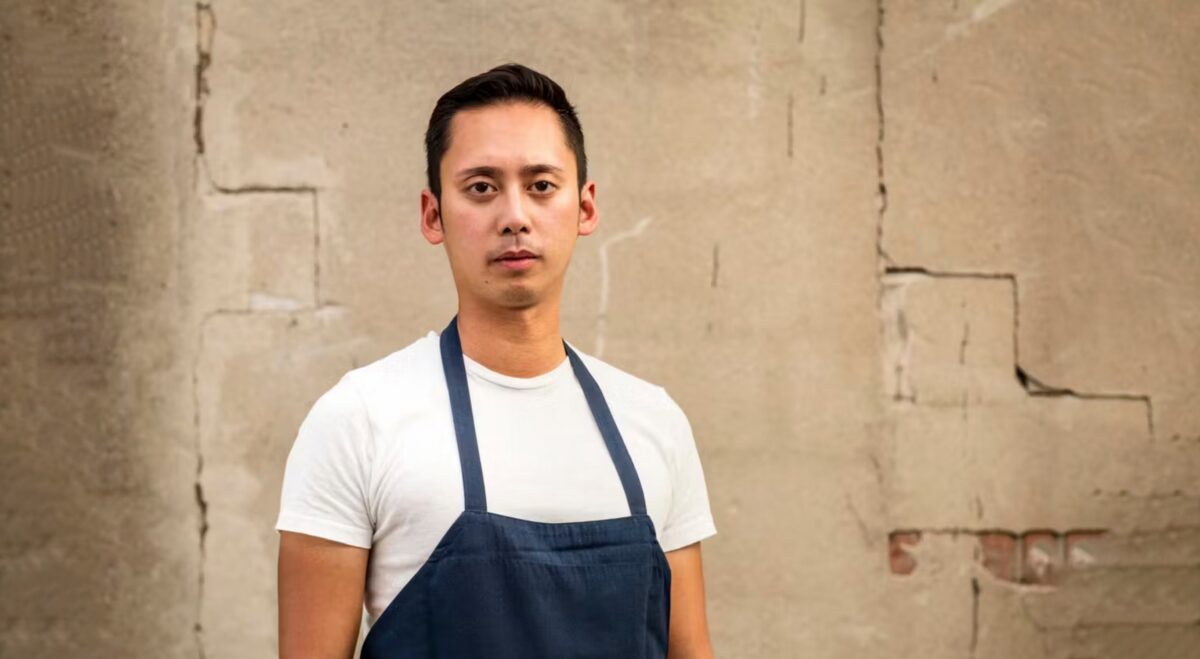Northern Italian cuisine featuring dairy products and vegetables that brings out the true flavors of the ingredients
Tanta Roba is a casual Italian restaurant in Myogadani, Bunkyo City, Tokyo. This time-tested restaurant opened in 1999 and has remained a favorite of locals as a trattoria where diners can enjoy delicious food without pretense. The warm interior decor is reminiscent of a bistro in the Italian countryside, and the checkered tile floor stands out.
In addition to tables that can accommodate large groups, Tanta Roba has counter seats where diners can chat with the chef as he works in the open kitchen as well as terrace seating that provides a view of the cherry trees, making it perfect for everyone from solo diners to couples, groups of friends, and families.
In 2010, Hayashi was hired as a chef at Tanta Roba. Having trained at ristorantes and trattorias in northern Italy, he primarily serves the regional cuisine of northern Italy.
In Piedmont, where local production for local consumption is the norm, the cuisine highlights the natural flavors of the ingredients, with dairy products and vegetables as the staples. Hayashi visits producers throughout Japan to talk with them directly and source seasonal ingredients, mixing and matching regional culinary techniques to achieve authentic flavors. To enhance wine pairings for diners, he visits Italian wineries and carefully selects wines to convey their producers’ passion. At Tanta Roba, the walls near the entrance are covered in signatures from winemakers who have visited from Italian wineries over the past 25 years.
Hayashi, who pursues ingredients of excellent taste, is very particular about rice, using Japan Rice sourced from Kagoshima. He says that fluffy sweet and sticky Japan Rice enhances the flavors of risotto and stuffed cuisine and is perfect as a binder for desserts such as tarts and puddings.
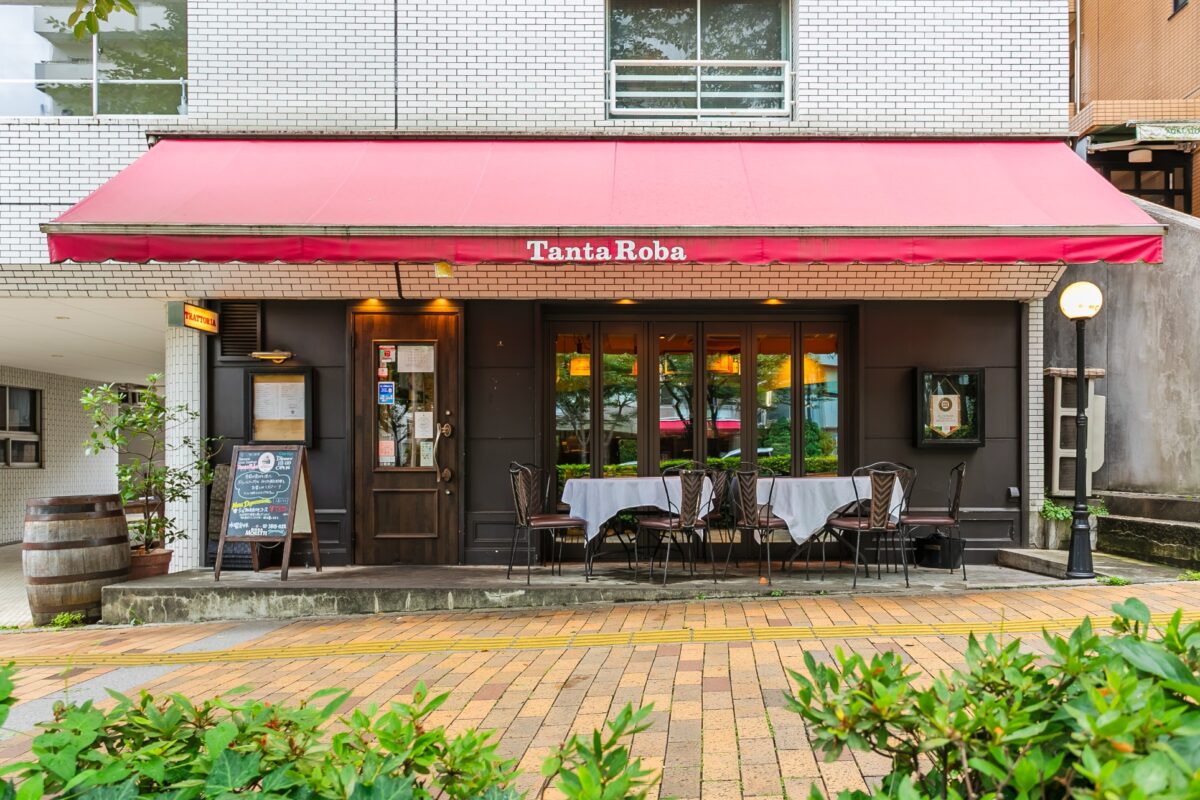
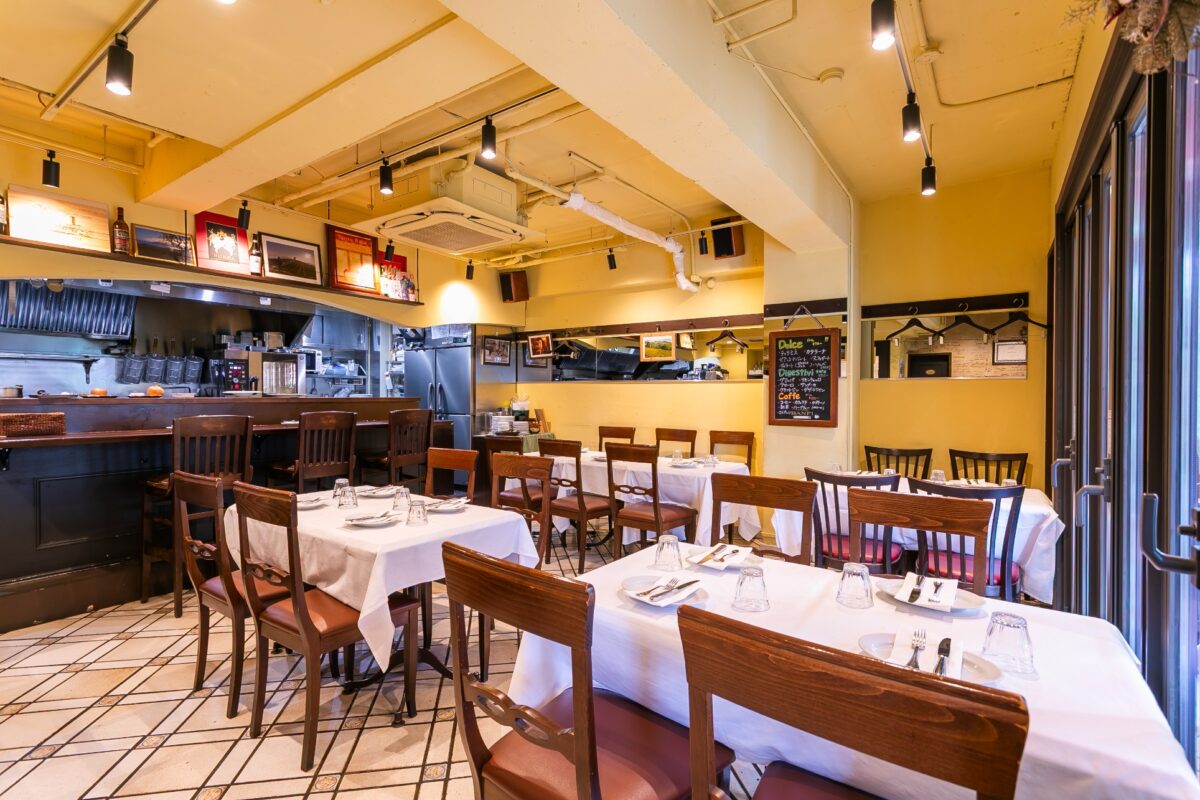
Learned to make the most of ingredients by training in Italy
The catalyst for my becoming an Italian chef was my family pushing me to move out and become independent after I graduated from high school. I loved soccer and was interested in Italian teams, so I developed an interest in Italian cuisine as well and wanted to try making it. I first trained at a ristorante and trattoria in Osaka for three years, but I began to think, “I don’t know if this is authentic Italian cuisine. I want to learn what it really tastes like,” and so I went to train in Italy. Then, a chef I knew introduced me to a trattoria in Piedmont in northern Italy.
The restaurant I trained at in Piedmont was in the countryside, and they even used the wild herbs grown on their spacious grounds as ingredients. I began my mornings by picking wild herbs as part of ingredient preparation, and peddlers selling eggs or cheese would come by while I was out gathering herbs. I would listen to them describe their goods like, “We have such-and-such cheese today” or “We only have these eggs” and then choose what to use on the spot.
I found it incredibly interesting to make food with ingredients as the foundation, and I came to think that “This is what people are meant to do.” It was there that I developed my stance as a chef who tackles ingredients head-on and considers how to cook dishes to be as delicious as possible. It is the skill of a chef to be able to maximize the deliciousness of seasonal ingredients, which can be considered a once‐in‐a‐lifetime experience, and I feel that doing so puts my skills to the test.
Thereafter, I continued to train in restaurants around Tuscany and Veneto, and I returned to Japan about two years after departing for Italy. I kept training even after returning to Japan, and I was hired to take over as chef at the time-tested restaurant Tanta Roba in 2010.
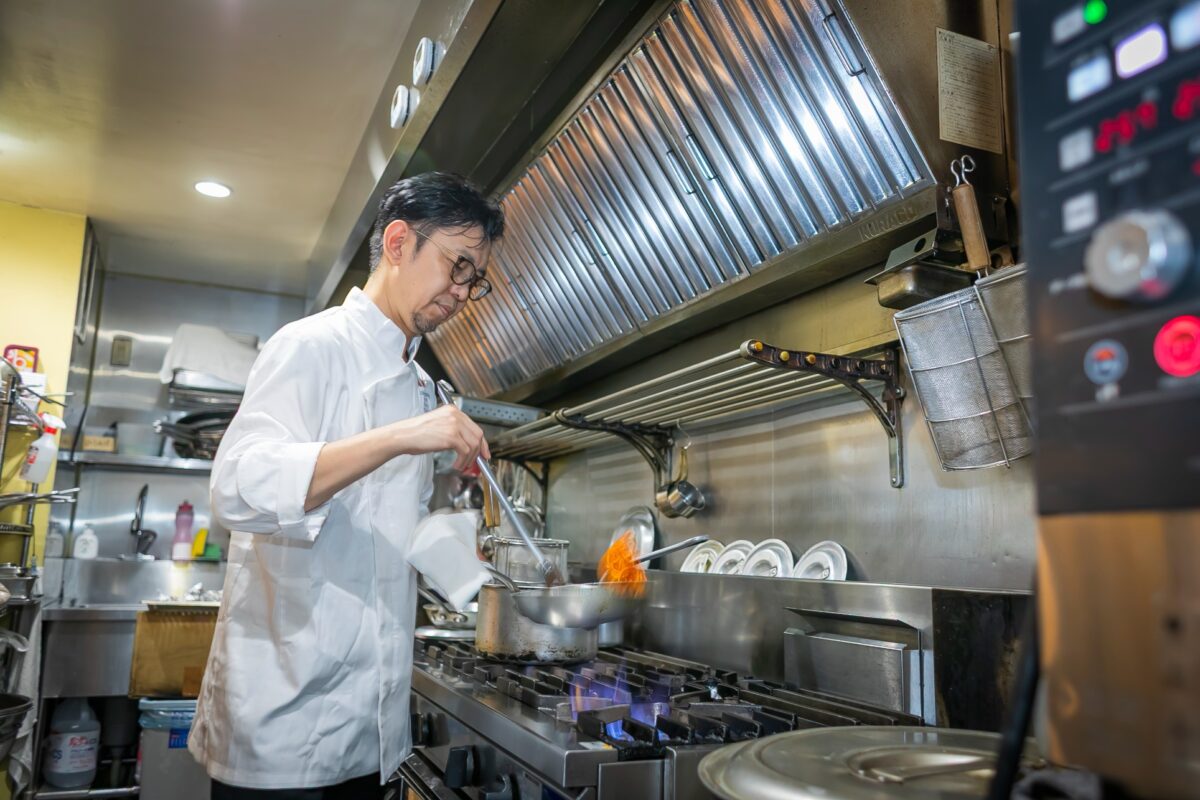
Sourcing seasonal ingredients from producers across Japan and making the most of imperfect vegetables
While working as a chef at Tanta Roba, I began overseeing The Momentum by Porsche, the official gastronomy restaurant of Porsche, as executive chef in 2022, which taught me to value Japanese ingredients even more.
Until then, I had often sourced ingredients from Italy, but I decided to scale up the Piedmont approach of local production for local consumption and expand my sourcing to encompass all of Japan.
Also, I had heard from producers about the difficult situation that they “cannot ship out imperfect vegetables and have no choice but to throw them away,” I felt it was so wasteful and wondered if there was something I could do.
At the restaurant where I trained in Italy, we valued the “spirit of mottainai” (mottainai is a Japanese term that refers to a sense of regret over waste) and used every last bit of the ingredients. For tomatoes and everything else, we used as much of them as we could, including the skin, stem, and seeds, and when I tried eating them, I found they tasted quite good. Based on that lesson, I had developed my techniques for using every part of the ingredients and felt that I wanted to show off my skills as a chef by creating delicious food from them. Since then, I have been actively sourcing imperfect ingredients, aiming to support producers while connecting them with customers to generate excitement.
Based on this “spirit of mottainai,” I am experimenting with different ways of using leftover rice in dishes. Japanese rice is also good cold, so I sometimes garnish dishes with flattened baked rice crackers to give them a glamorous look and add an enjoyable crunchy texture.
For our restaurant’s handmade tajarin noodles with fresh tomato sauce, instead of canned whole tomatoes, we use imperfect tomatoes full of seasonal zest. Tajarin noodles are yellow noodles made only with egg yolks kneaded in. They are a regional dish unique to Piedmont, a place that often uses eggs and dairy products. I coat the noodles in a sauce made by simmering fresh tomatoes with their skins and seeds so that no part goes to waste, and then top them with grated Parmesan cheese. Diners can enjoy the texture of the home-made noodles that are firm and have a good snap along with the refreshing taste of seasonal tomatoes.
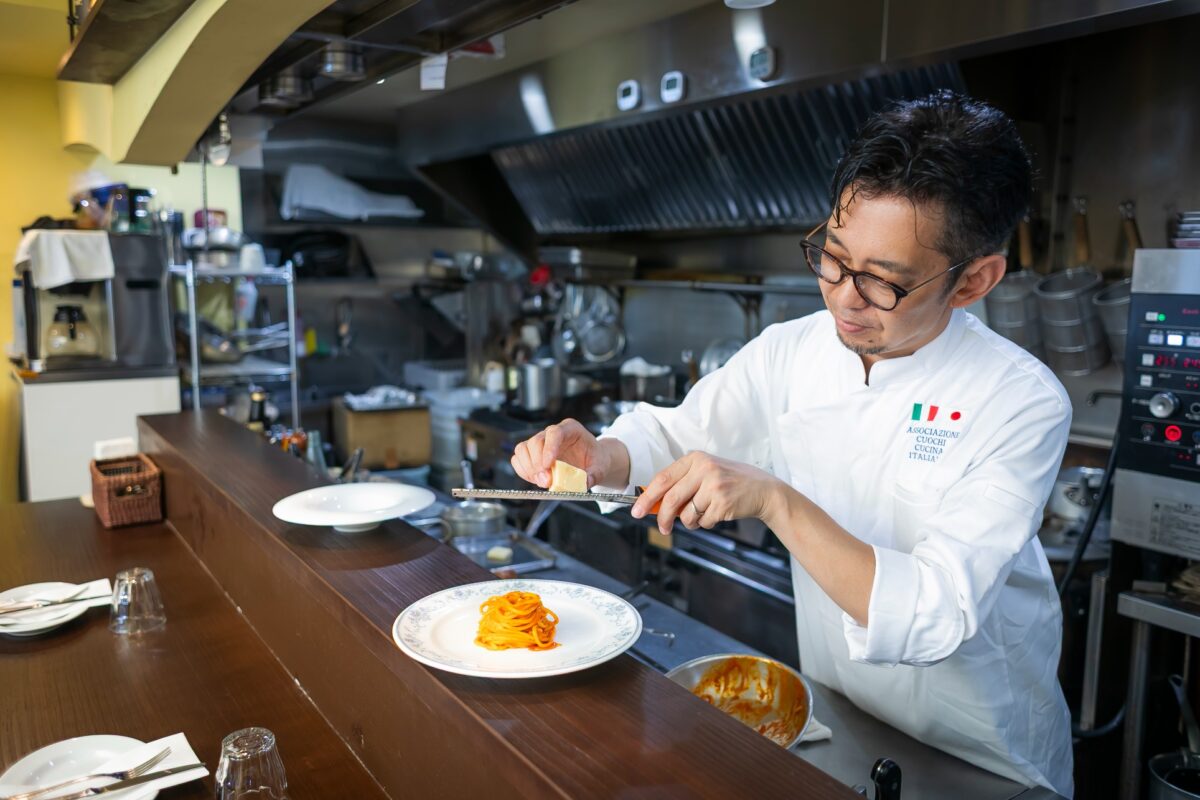
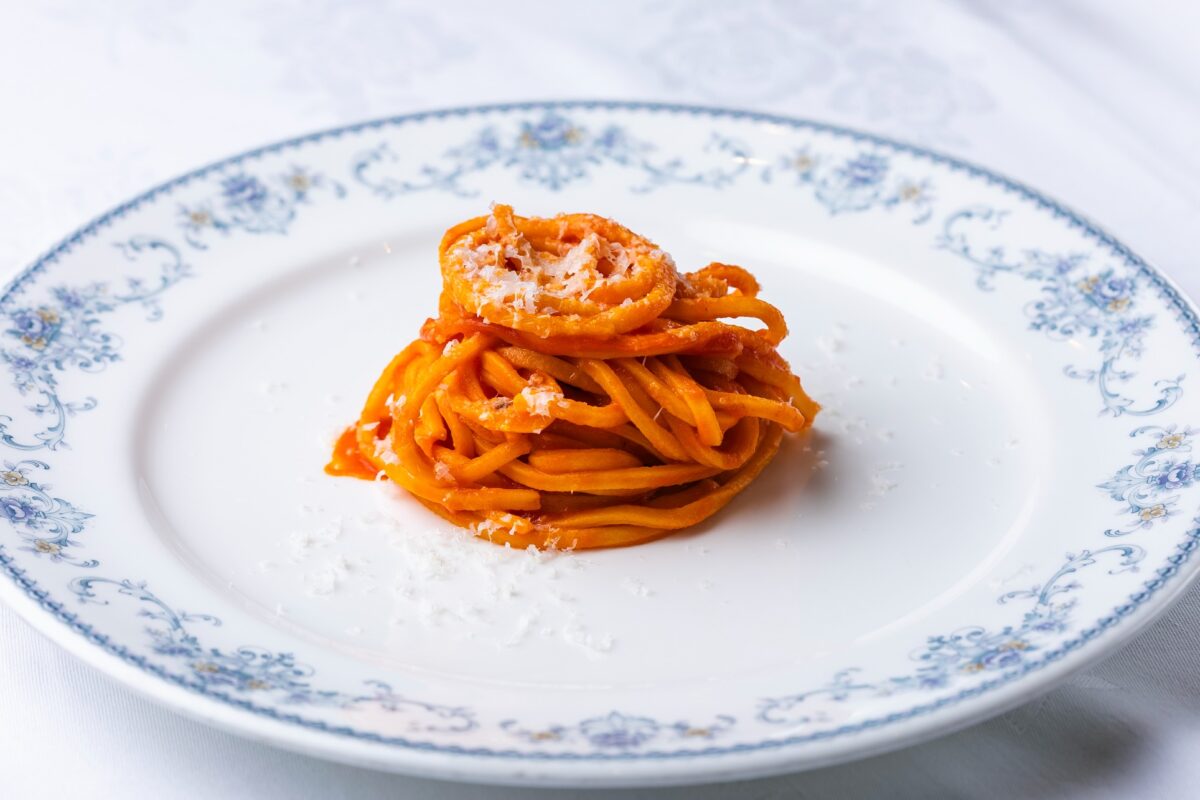
Rice grown in Japan fills your mouth with more and more umami as you chew;
its natural sweetness and thickness bring out the flavors of northern Italian foods
Japan Rice is much sweeter and produces more and more umami as you chew. Japan is blessed with spring water, and the flavor varies by region. Areas near mountains have various nutrients dissolved in their spring water, adding an even more delicious flavor. Rice from other countries is almost always grown in hard water, but Japan is a country with soft water. Japan Rice that is grown in soft water and then cooked in soft water is fluffy and chewy with a gentle sweetness.
Japan Rice also works wonderfully in Italian recipes. Italian rice has a low moisture content and is dry and crumbly, so it is not suited to dishes you want to thicken, and sometimes you need to add cornstarch. On the other hand, using Japan Rice produces a natural sweetness and thickness, and umami spreads throughout the food.
Agnolotti del Plin, a type of ravioli that is our restaurant’s specialty, is a regional dish from Piedmont. Cherishing the “spirit of mottainai,” I use cheese risotto with leftover stewed meat. The rice I use in the risotto is Nagomi rice sourced from producers in Kagoshima. It is a good variety for drying and aging, and I use rice that has been aged for a year or two to increase the umami. To make rice grown in Italy thick and rich, an extra step like cooking in milk is required, but Japan Rice can be used as-is to create a creamy texture and increase the umami.
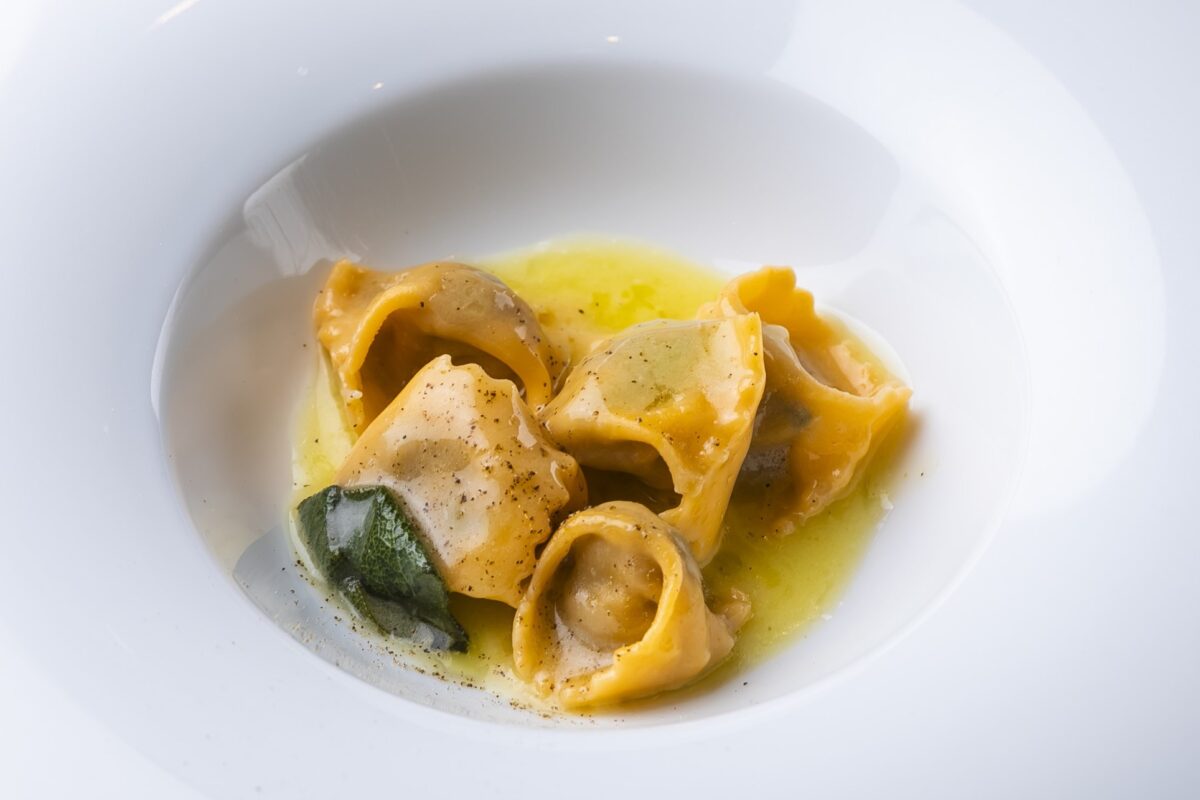
Even winemakers with excellent palates rate Japan Rice highly;
gluten-free and excellent pairing with ingredients like prosciutto
In fact, I love rice. Even though I am an Italian chef, I always use rice in the staff meals I have with my team. Rice is a staple for Japanese people that is not just delicious and filling but a source of vitality.
Also, some customers from overseas who dine at our restaurant request gluten-free meals, and rice is very useful in such a situation. What’s more, winemakers with excellent palates rate Japan Rice highly. When I invite winemakers from Italy to hold events, I sometimes serve them sushi topped with prosciutto as a special dish. I want them to taste the delicious flavor of just-cooked rice, so I deliberately serve them a simple type of sushi topped only with prosciutto. Everyone is amazed, exclaiming, “Japan Rice really is delicious.”
As I have traveled all over Japan to visit producers, I have tasted rice from a variety of regions from north to south, and I have experienced the distinct deliciousness of each. The flavor of rice is strongly affected by water, so I think using the best water makes rice even more delicious. Also, by using water that has qualities that closely match the water in the area where the rice was grown, you can bring out the rice’s natural flavor even more. However, when cooking rice, it is important to wash it well to remove any musty notes and allow it to absorb the correct amount of water.
If you want to enjoy rice more casually, I recommend using pre-cooked rice packs. There are rice packs from different production regions, so you may find it interesting to eat and compare them. You can taste differences in the rice itself, and since rice pairs well with various kinds of ingredients, you can enjoy how toppings combine with rice as well. I hope you will experience the joy of discovering your own favorite flavors.
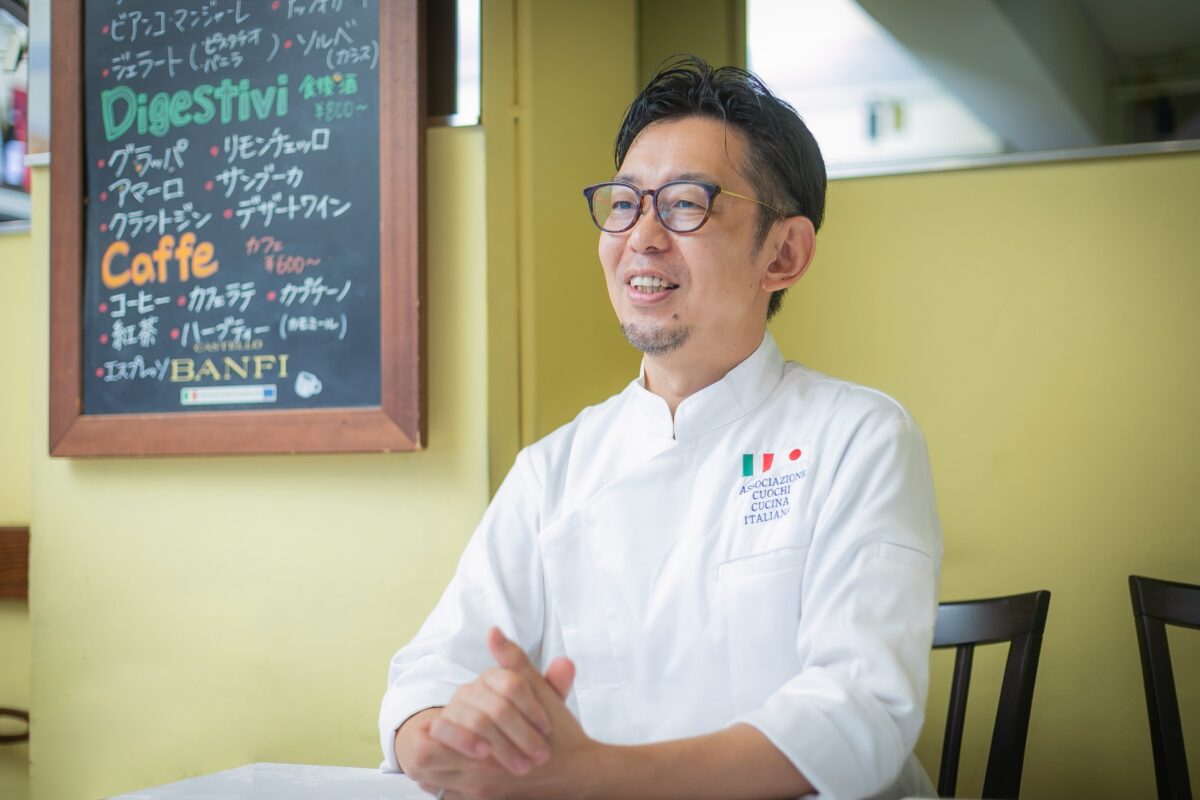
Recommended dish
Agnolotti del Plin アニョロッティ・デル・プリン
Agnolotti del Plin is a type of ravioli that is a regional Piedmont dish. It has a distinctive shape made by pinching it closed on both ends with one’s fingers, and it is stuffed with stewed meat and risotto. The rice used in the risotto is Nagomi rice sourced from producers in Kagoshima. It is a little similar to a variety of rice grown in Italy called Carnaroli that is considered perfect for risotto, but Nagomi rice has the natural sweetness and thickness unique to Japan Rice, and it brings out the flavors of meat and dairy products.
